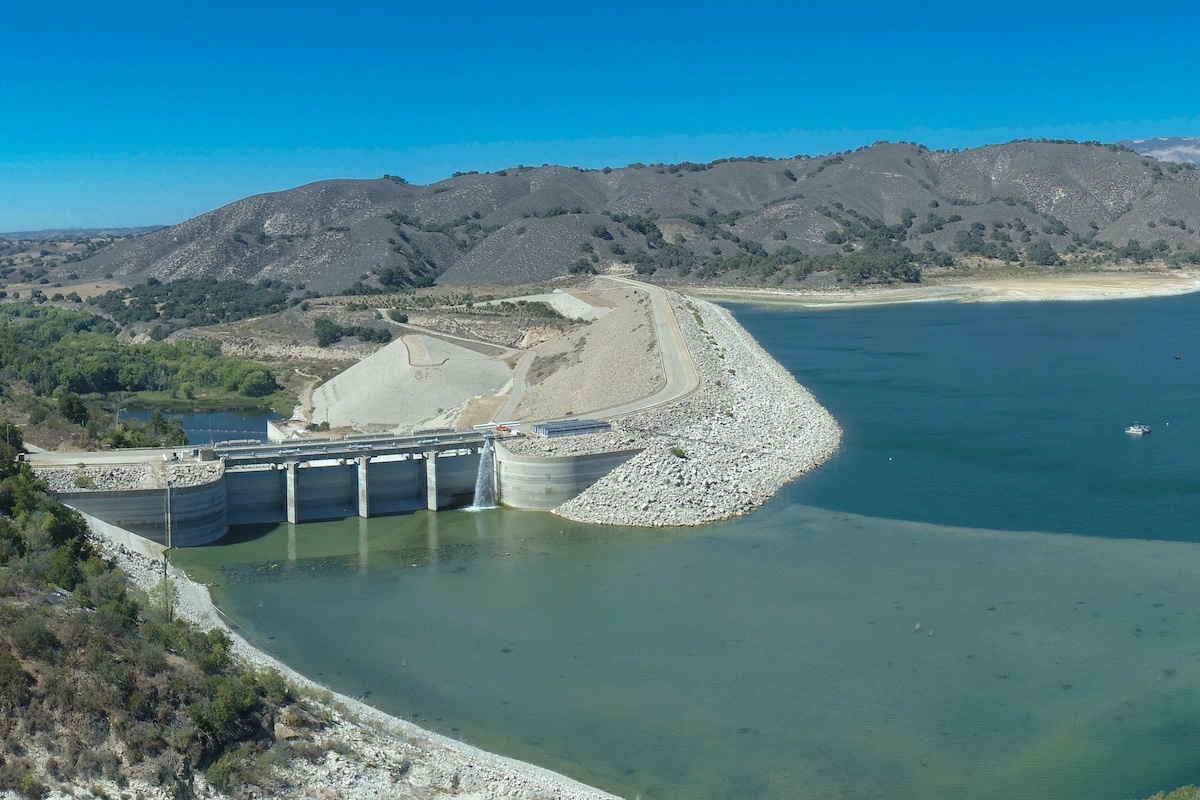City of Santa Barbara Prepared to Weather Drought
Years of Planning Will Help Get Us Through 2024

[UPDATE: Mar. 29, 9:30 a.m.] Councilmembers and city water planners are breathing a huge sigh of relief that Governor Gavin’s new drought-inspired executive order did not impose conservation mandates of 15 percent — as was both feared and rumored — but instead opted for a more urgent call to action for water agencies throughout the state to ramp up plans to use 20 percent less water. Later, should the drought persist, the governor stated water agencies might need to draft plans to cut water consumption by 30 percent.
In his executive order, Newsom called on water agencies to ban irrigation of “non-functional turf,” fields and lawns that serve strictly ornamental purposes. Recreational fields, for example, would not be included. New well drilling, likewise, should not be allowed.
Newsom also raised the always controversial possibility of dispatching “water cops” to crack down on excessive water users.
Newsom’s executive comes on the heels of news that state water consumers have used 2.6 percent more water this January than they did before the drought emergency was first declared. Along the Central Coast, the figure was 3.7 percent. By contrast, city water officials point out, Santa Barbara water users have cut back water use by 25 percent since the 2013 drought and have kept use rates at 2013 levels. A 15 percent conservation mandate, they have claimed, would be tantamount to a 37 percent cut in water use.
The proposed actions in the governor’s latest executive order applies only to urban and institutional water users, not agriculture. Agriculture uses roughly 80 percent of the water consumed in California.
[Original Story] The pounding rain that arrived early Monday morning may have been strong enough to rattle a few windows, but it won’t be enough to extricate the South Coast from the drought. Thus far, slightly more than two inches were reported on San Marcos Pass — enough to temporarily raise concerns about the possibility of debris flow in the scar area of last summer’s Alisal Fire. The cities of Santa Barbara and Goleta got even less. Undoubtedly it will help some, but given that California is now in the 776th day of one of the most prolonged droughts in recorded state history, it will not be enough.
This Tuesday, the Santa Barbara City Council will review its water supply portfolio. The early indications are somewhat reassuring: If California is on the deck of the Titanic, at least Santa Barbara is in a very nice deck chair. In part, that’s because city water planners have been preparing for the worst by allowing groundwater basins to recharge over the past three years with water from the city’s desalination plant.
While it came as big news last week that the state water project would only be delivering 5 percent of the water to which subscriber agencies are contractually entitled — down from 15 percent — city water planners had already been assuming that we’d be getting nothing at all. That being said, city water planners had been hoping to secure an additional 2,000 acre-feet of water this year from ag interests north of the Delta using the state water pipeline infrastructure to transport it here. That hope now seems more of a dream.
City water customers have been tightening their belts considerably — by 25 percent — since the last major drought beginning in 2013. “Community usage still remains on par with what the city used in the 1950s, when the population was half of what it is today,” said Councilmember Kristen Sneddon. She represents the city on the Cachuma Operations and Maintenance Board, the body that manages Lake Cachuma, the reservoir that supplies roughly half the water for the South Coast. Cachuma is roughly half full right now; one quarter of the water in the lake is owned by the City of Santa Barbara. Translated, that’s 23,000 acre-feet worth of water in the lake, slightly more than twice as much water as the city uses a year. “No one knows when this drought will be over,” Sneddon stated. Accordingly, this May, the council and the city’s water commission will begin discussing what serious conservation steps may be necessary to avoid a water shortage beyond 2024.
Support the Santa Barbara Independent through a long-term or a single contribution.



